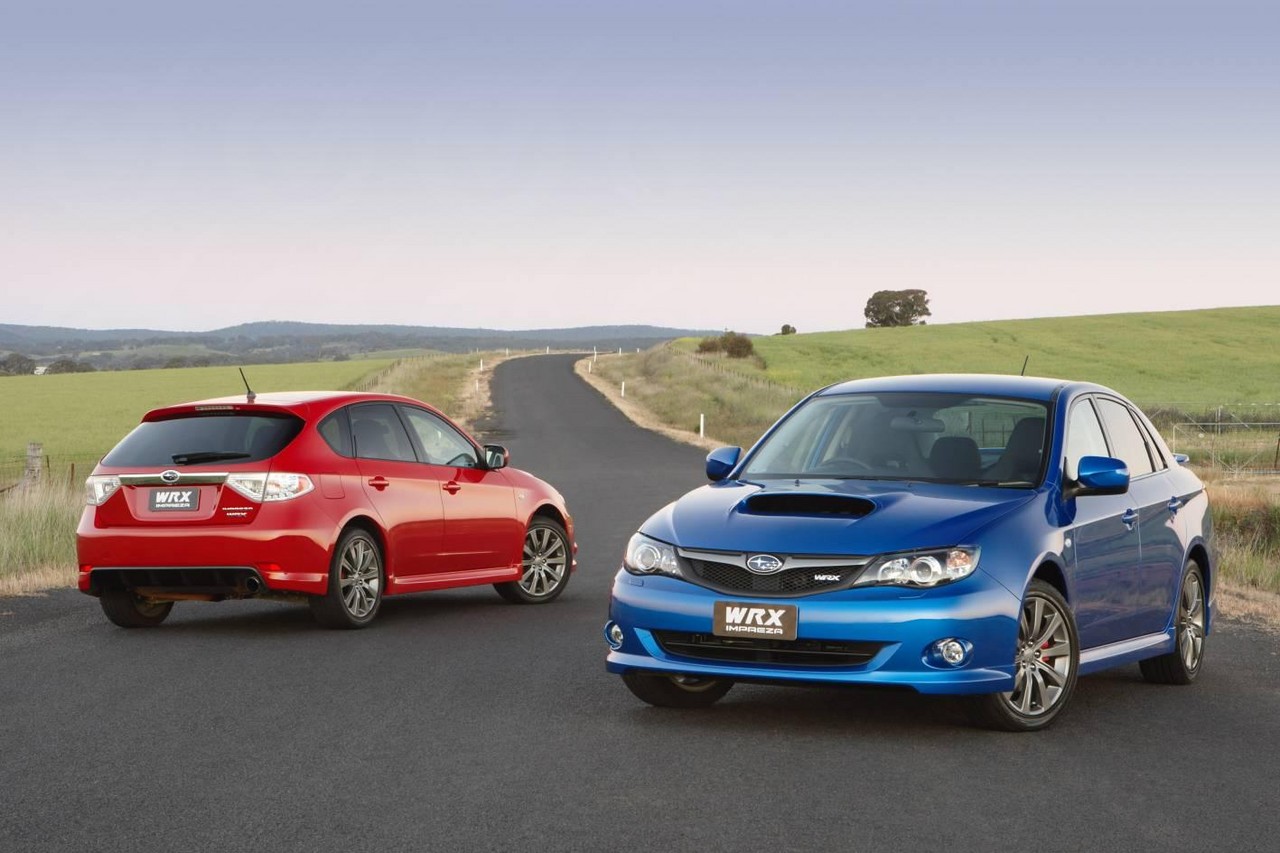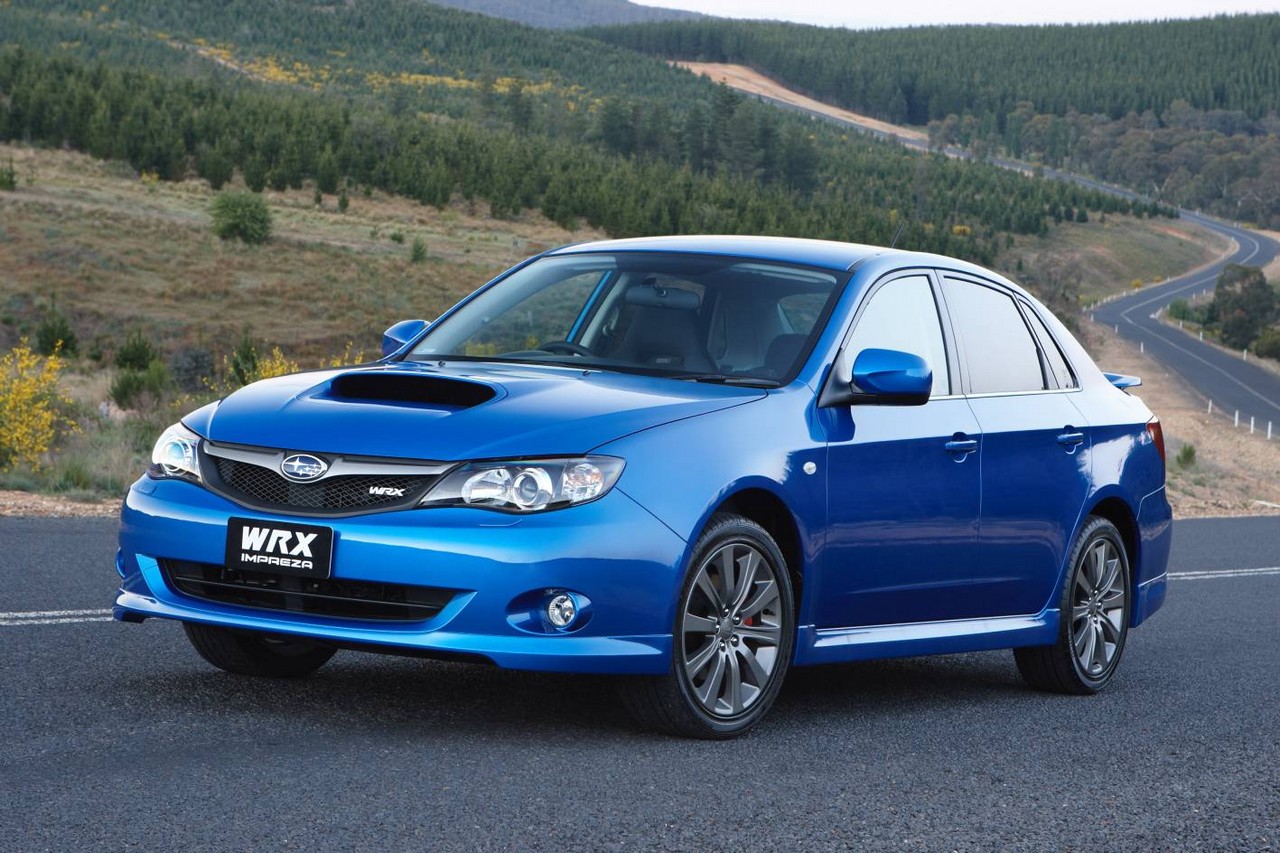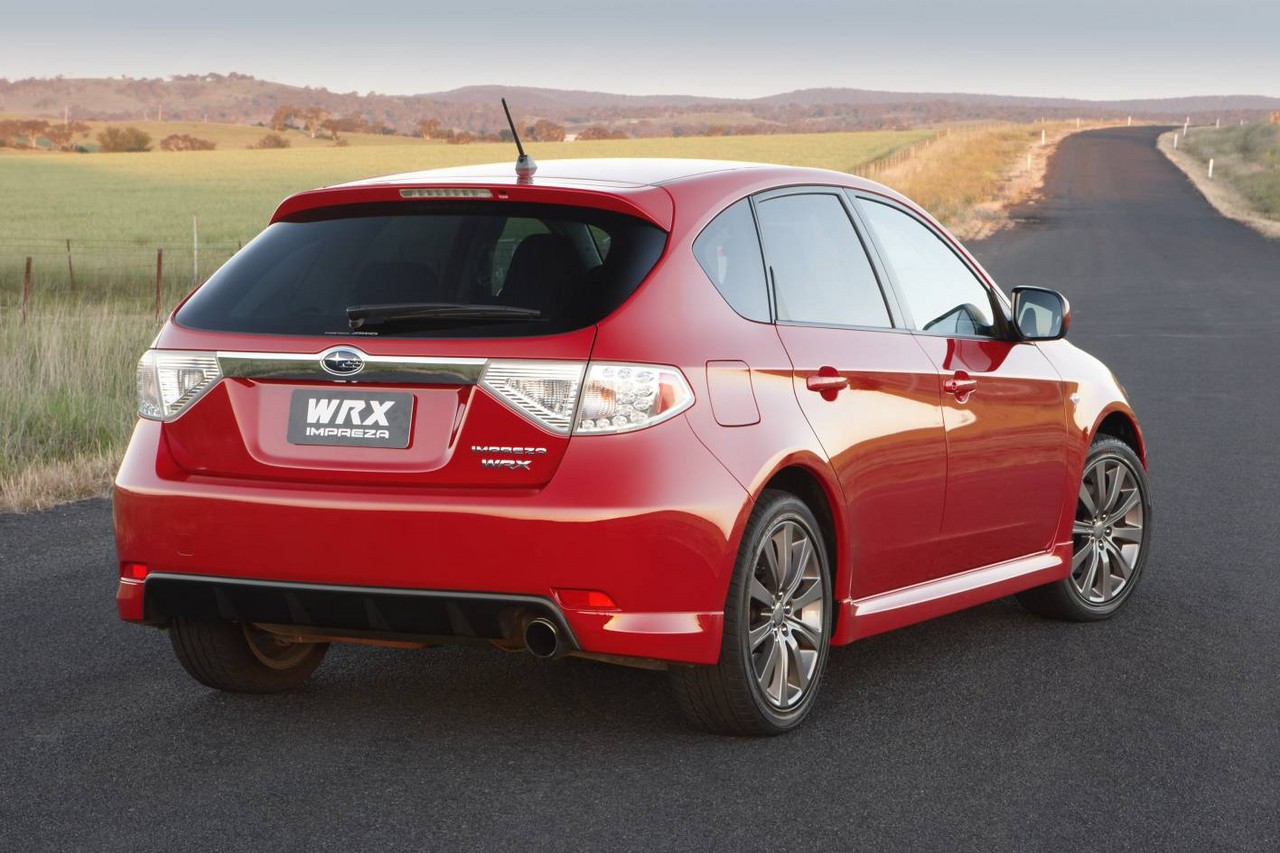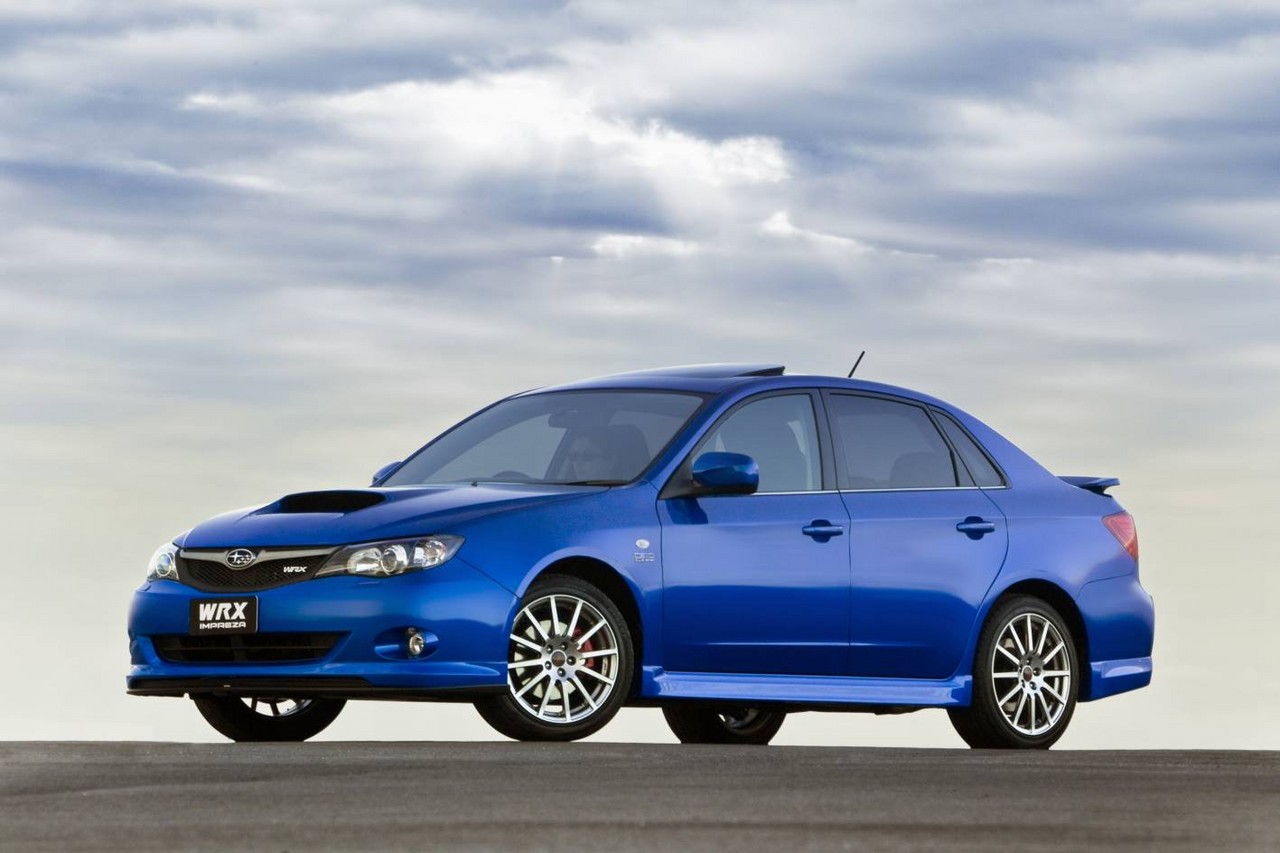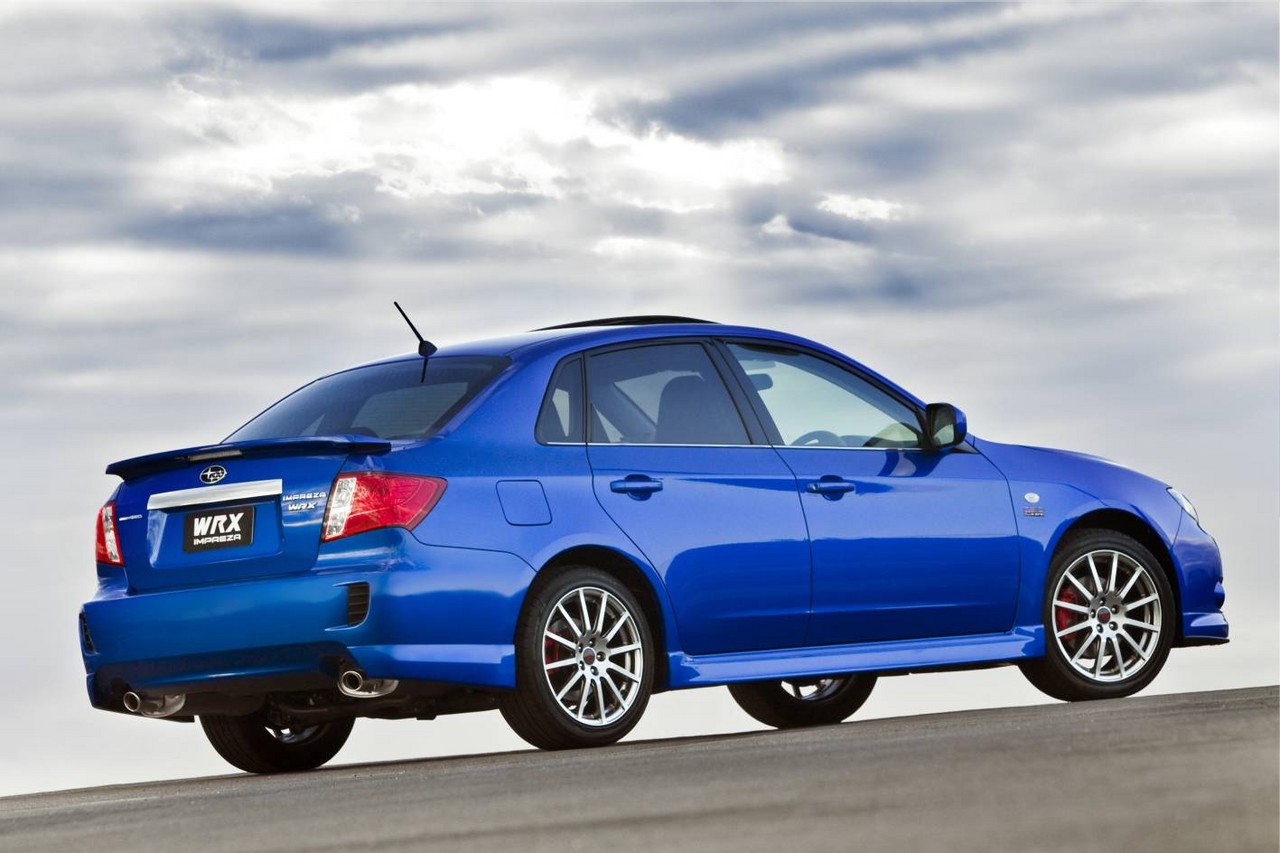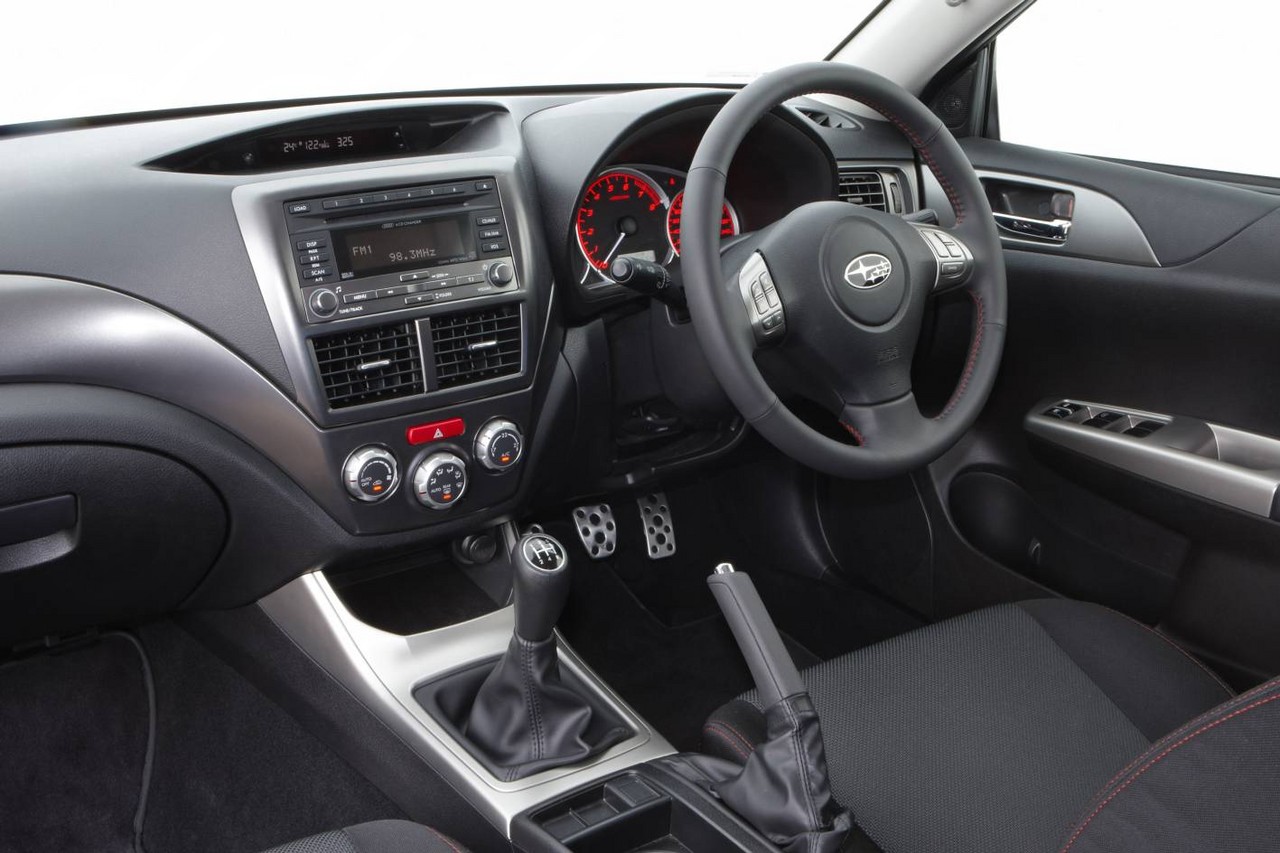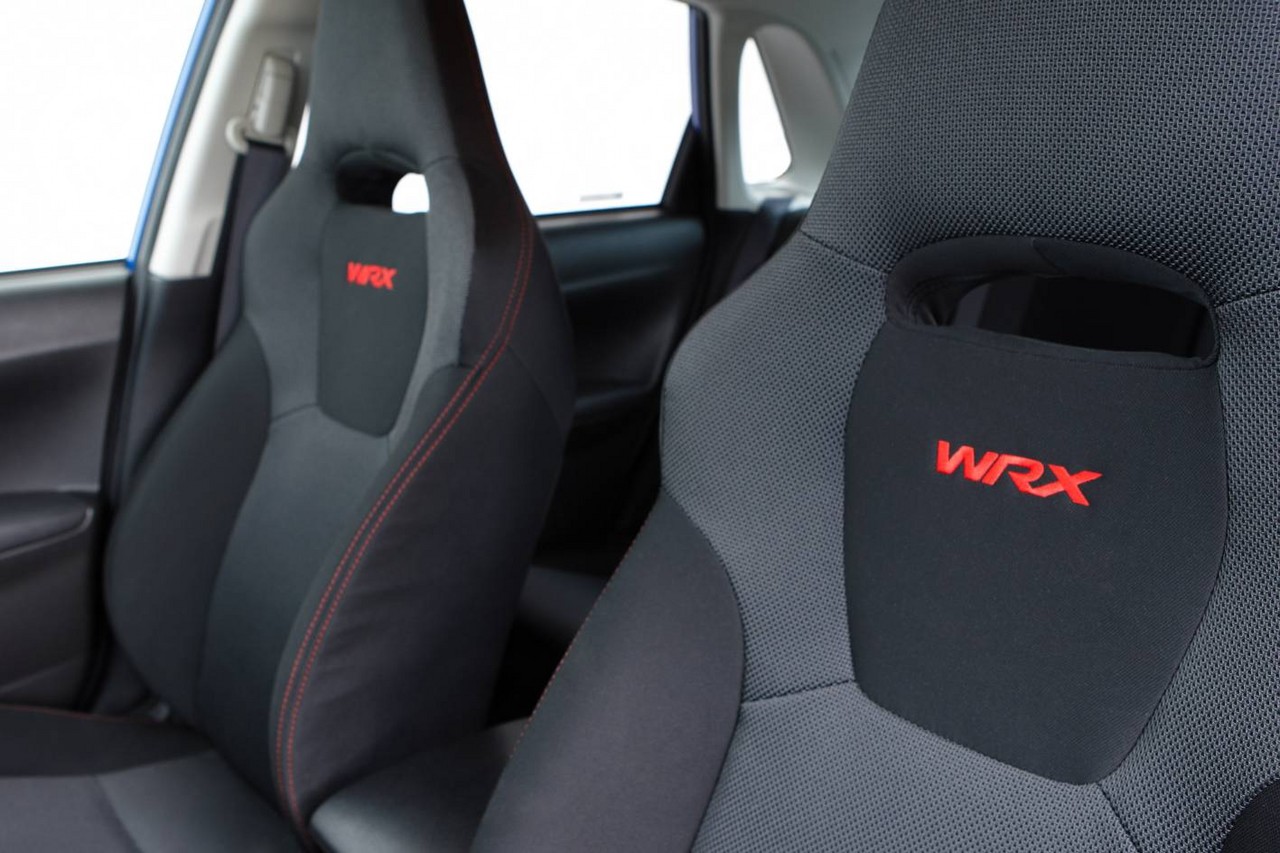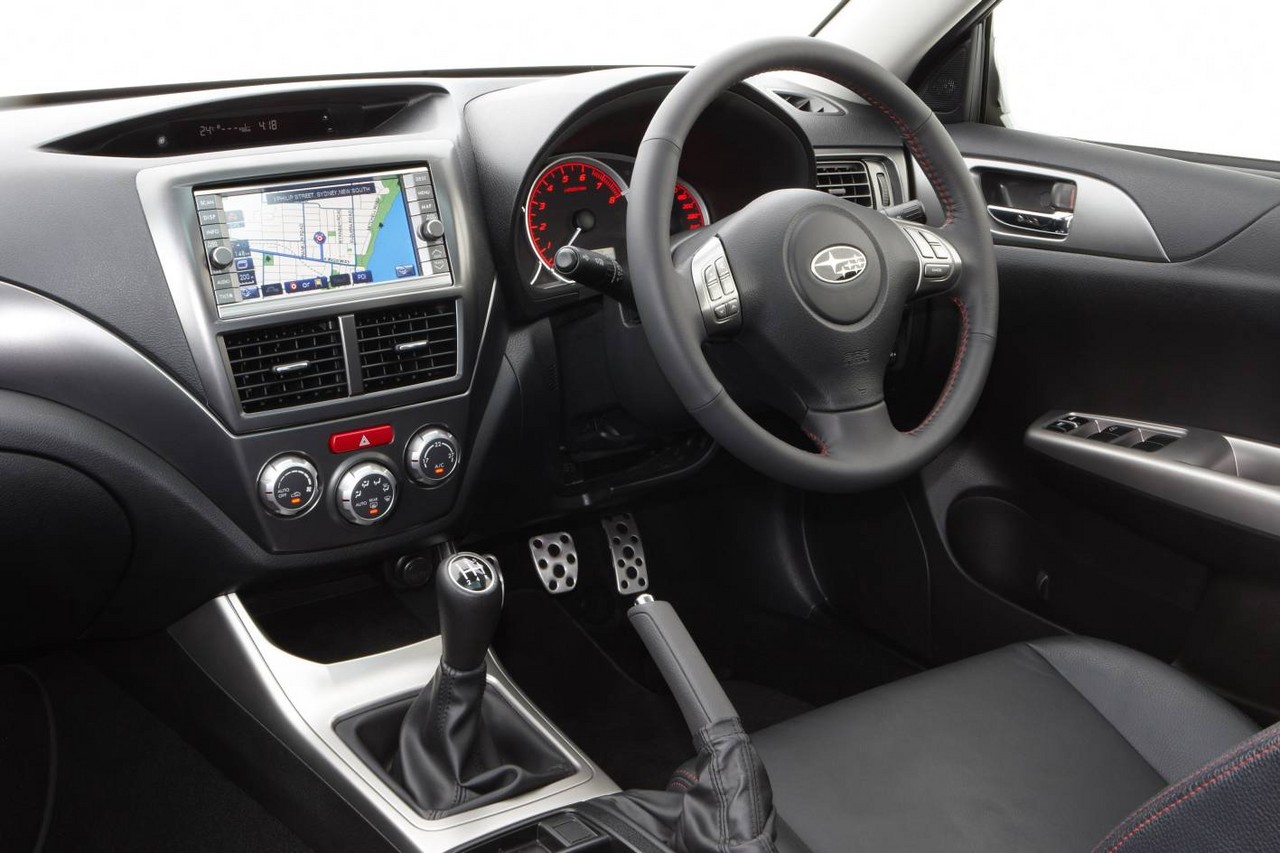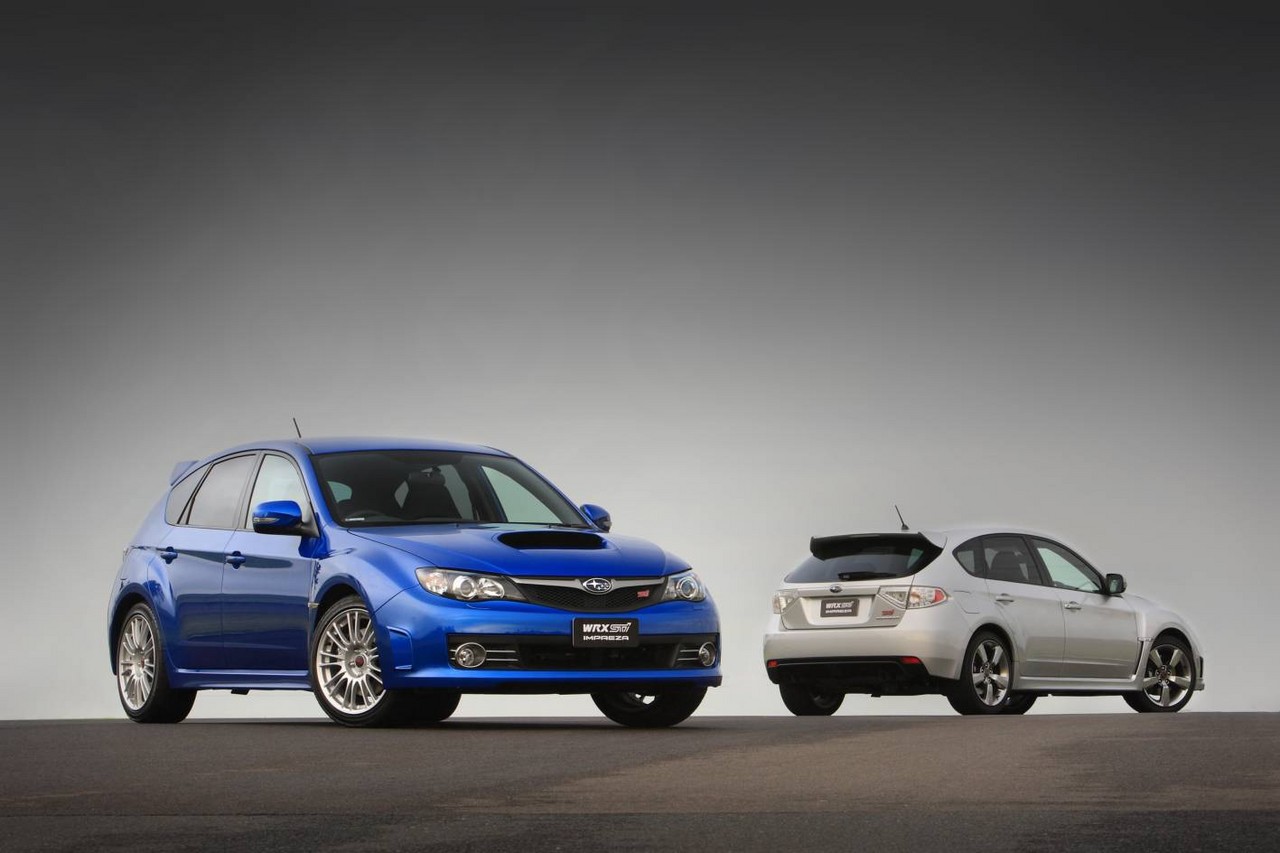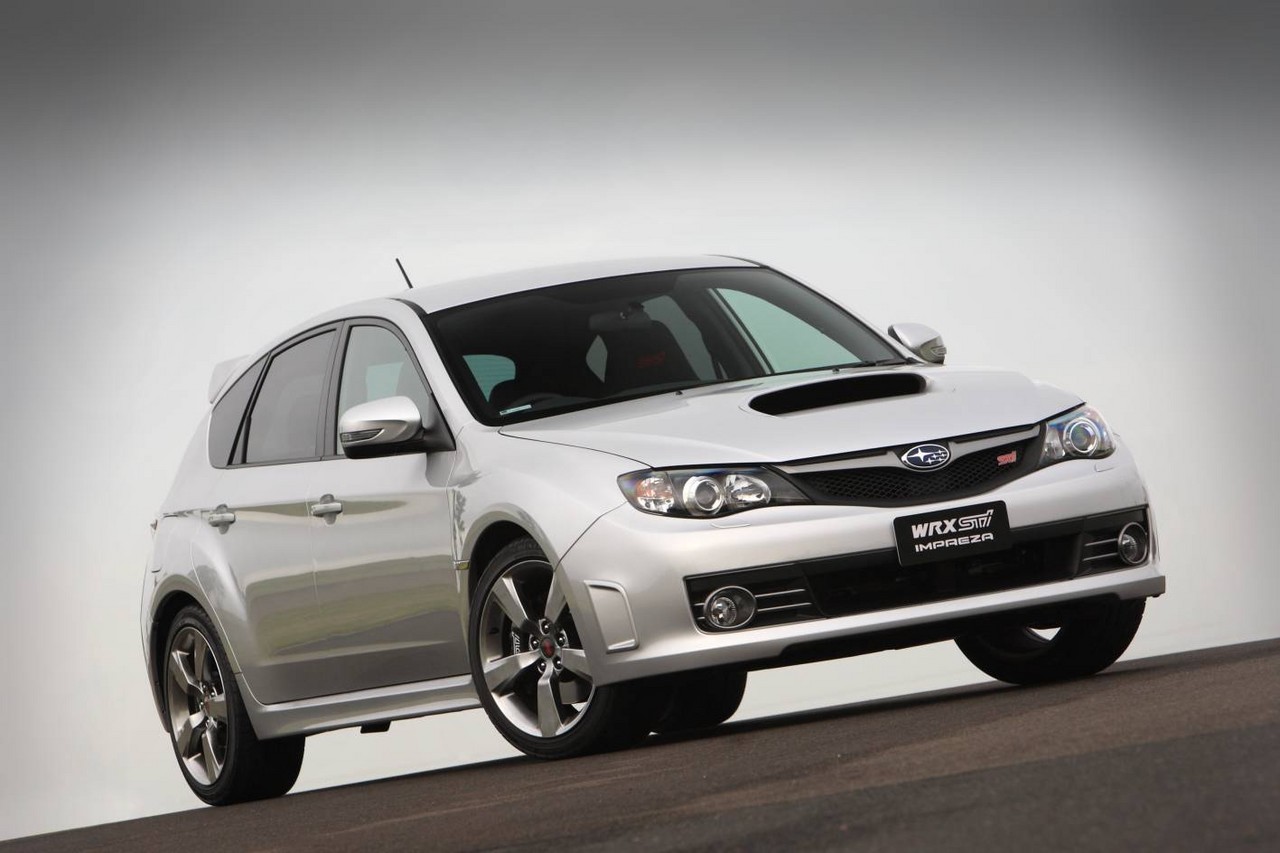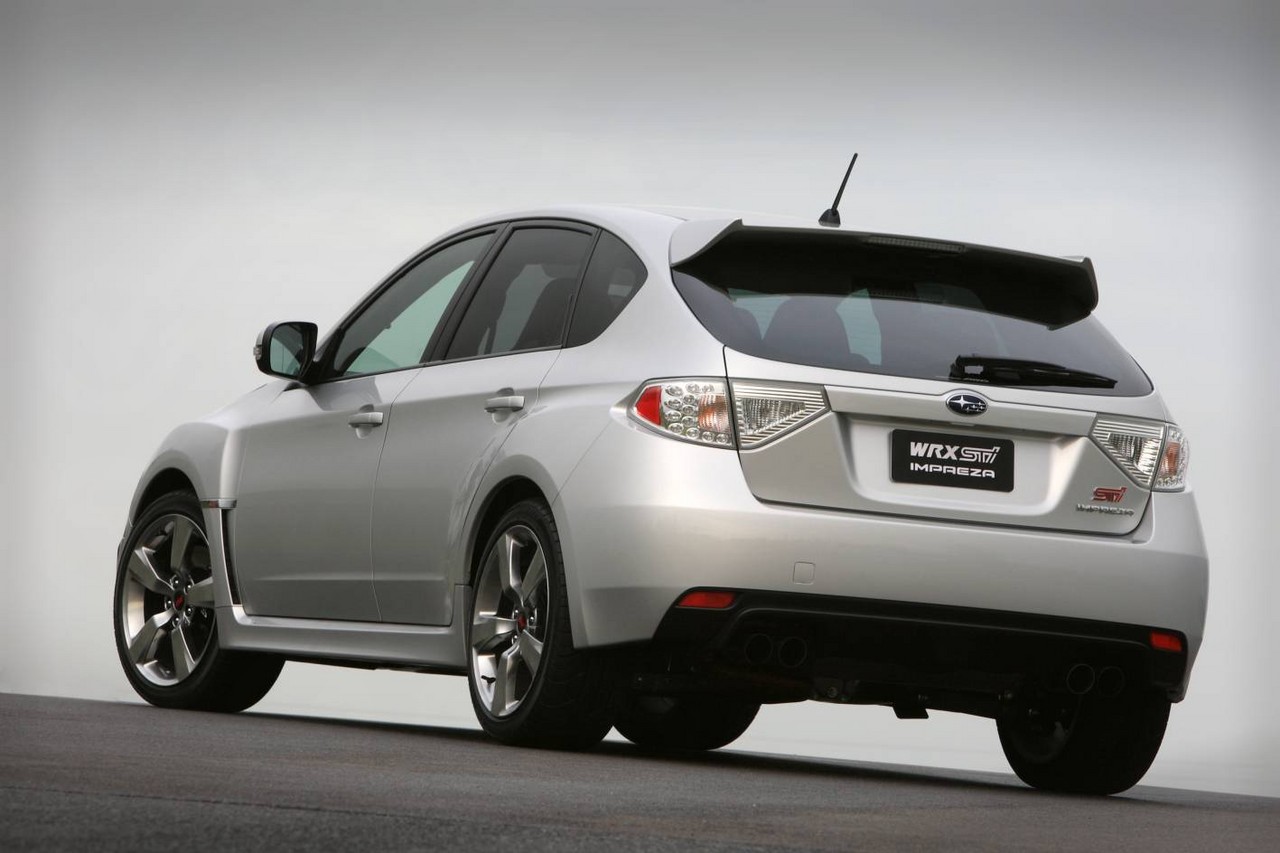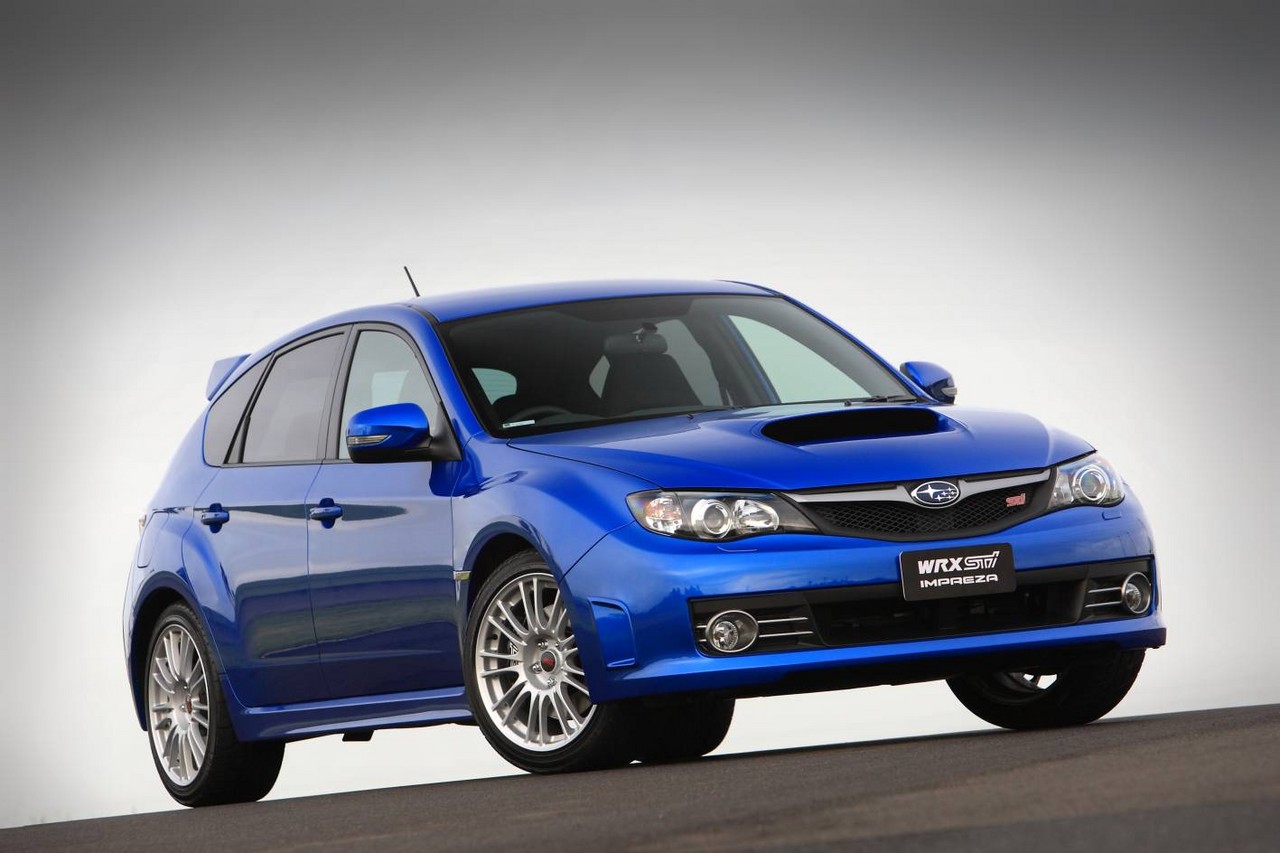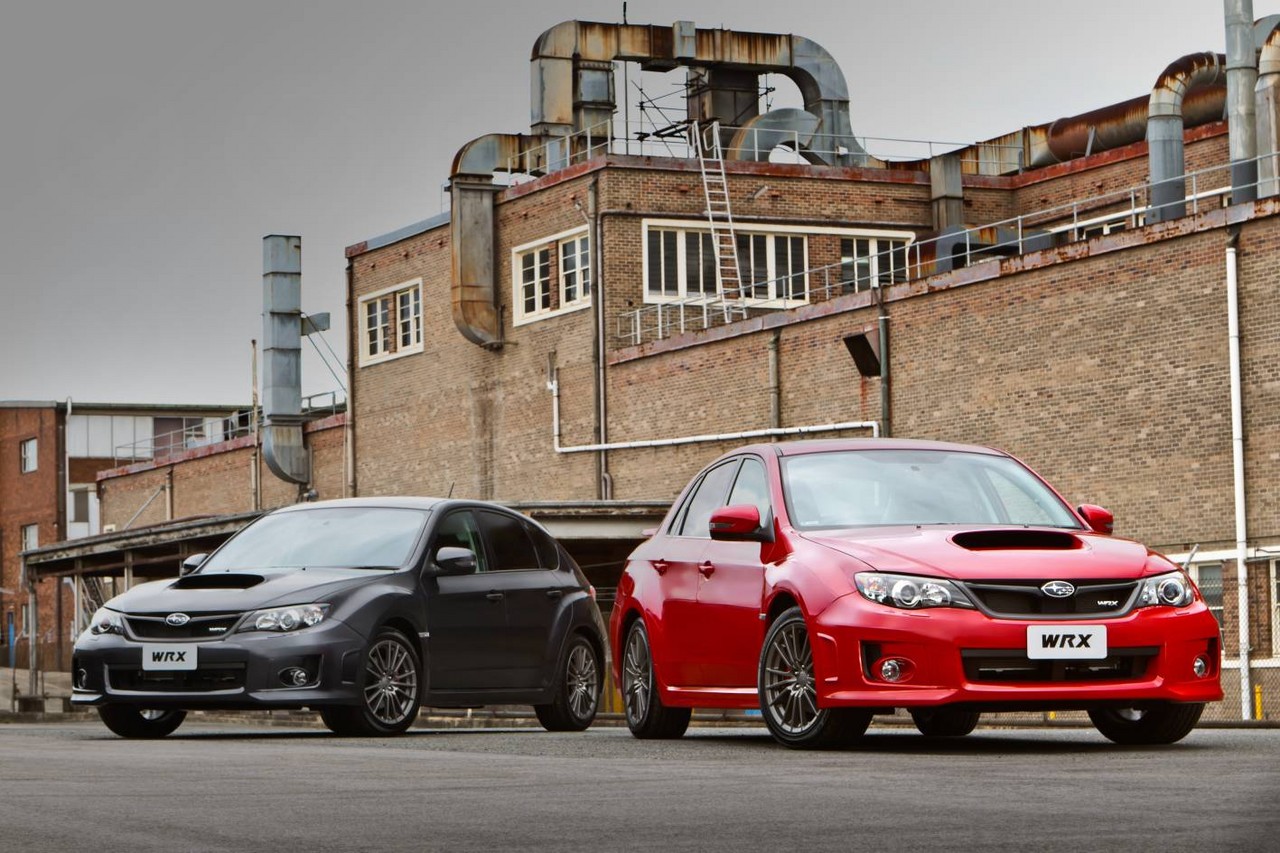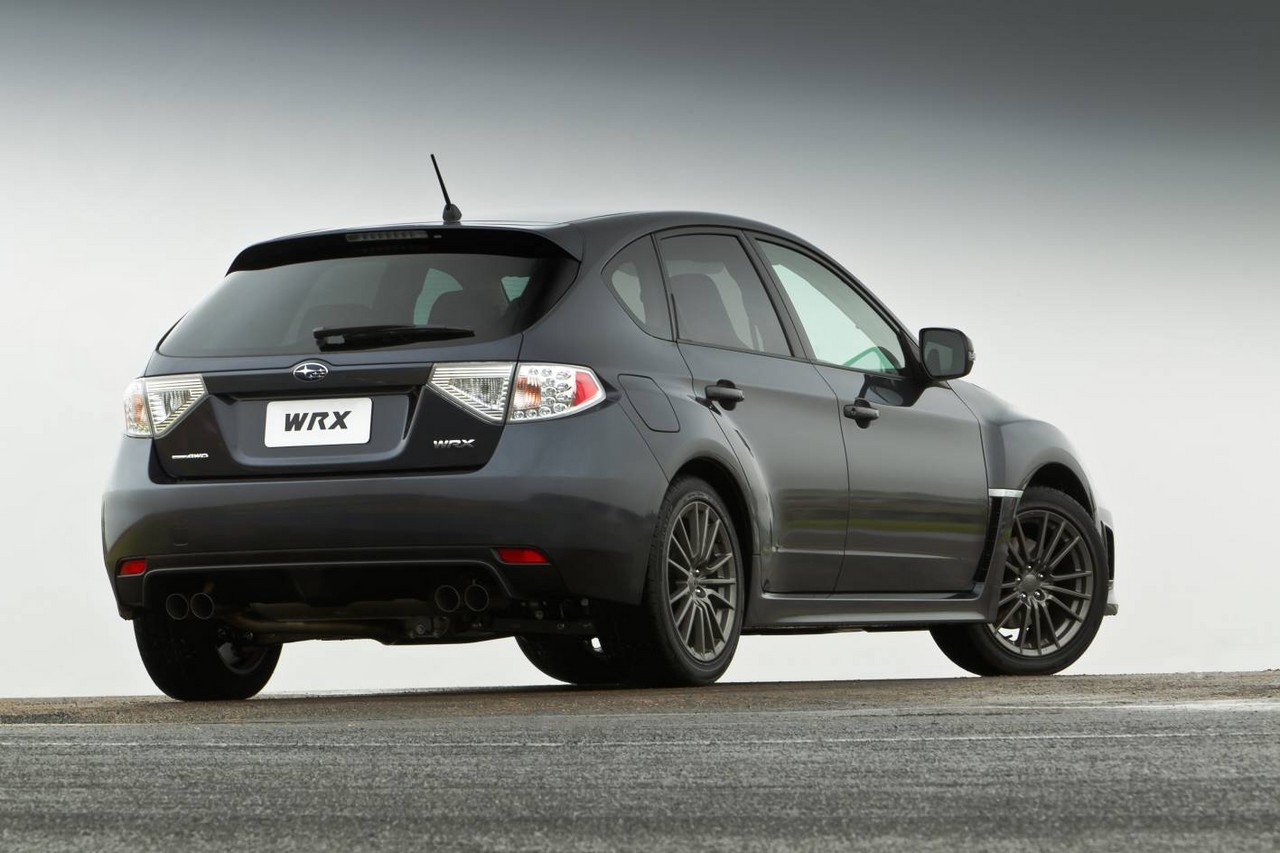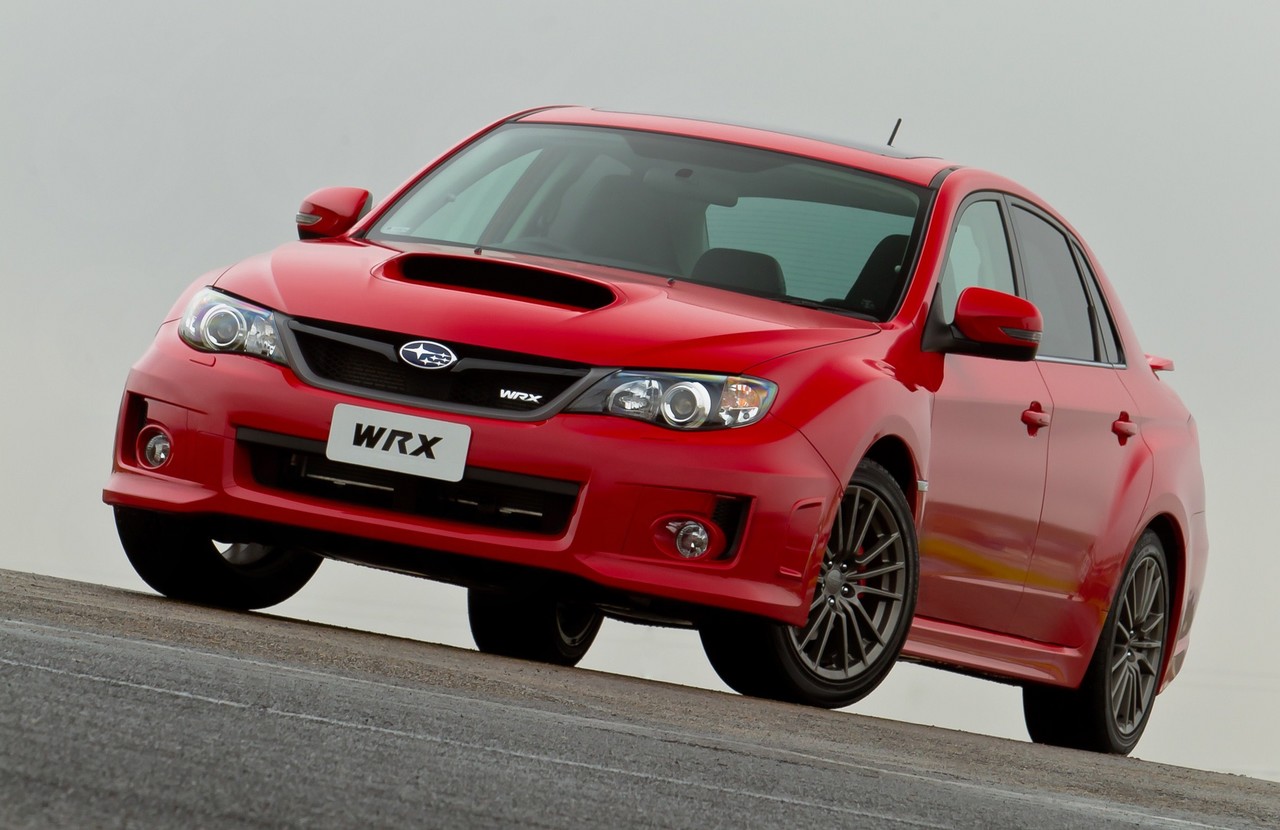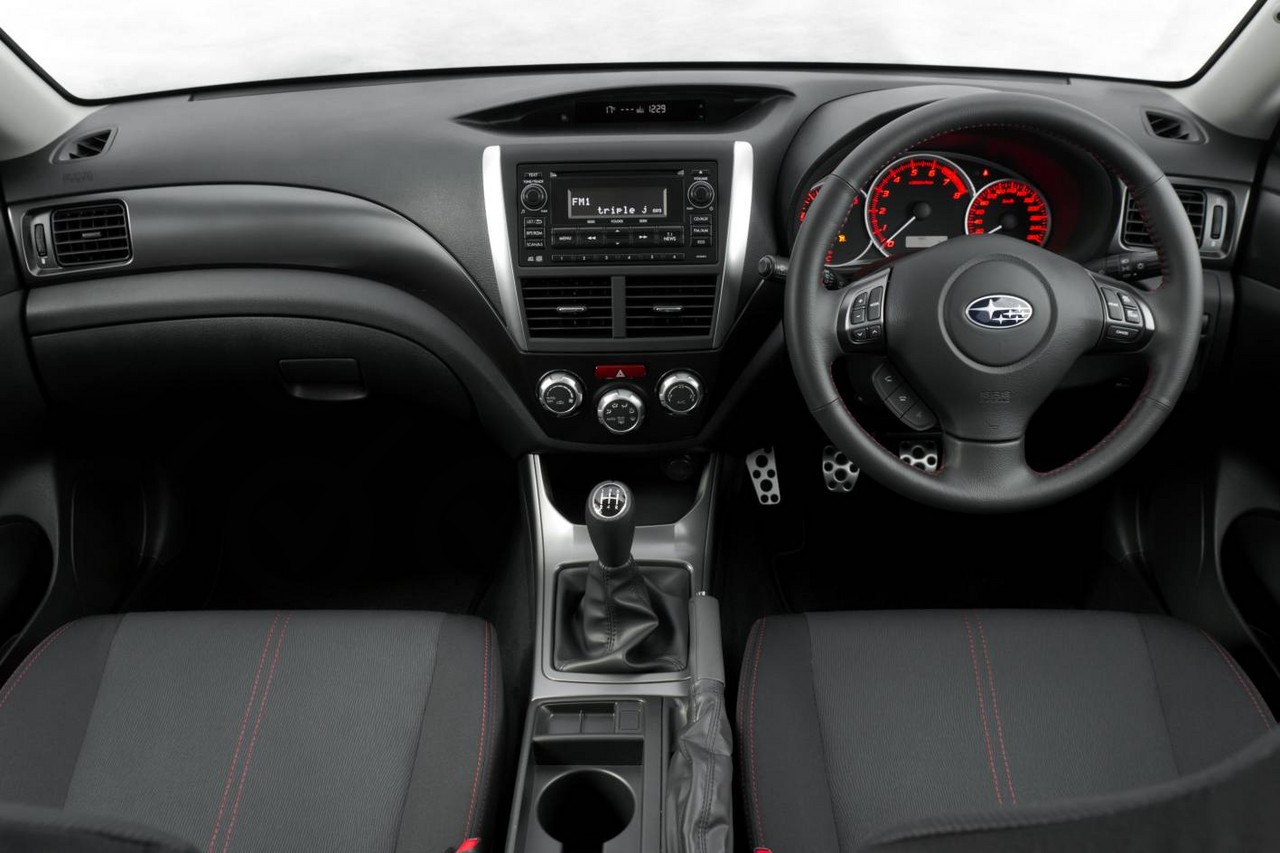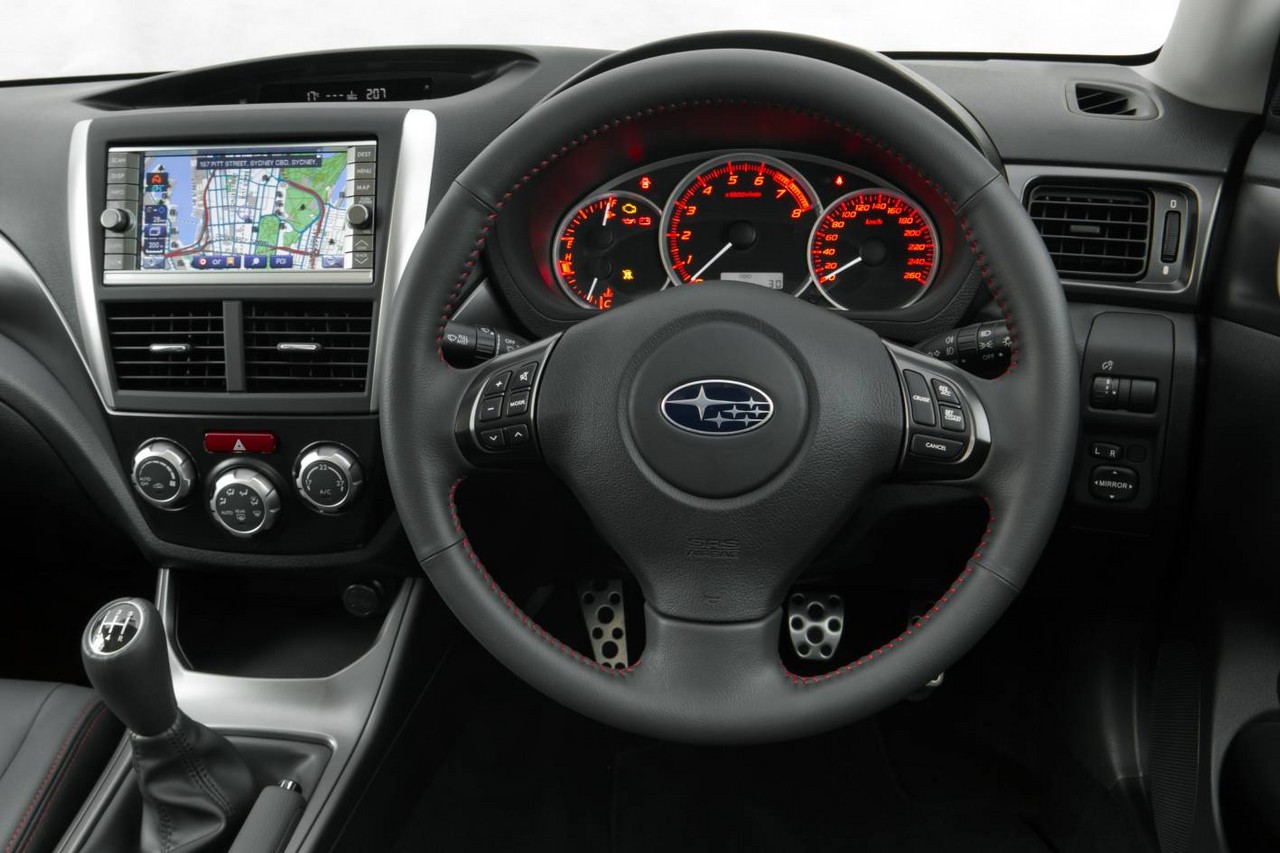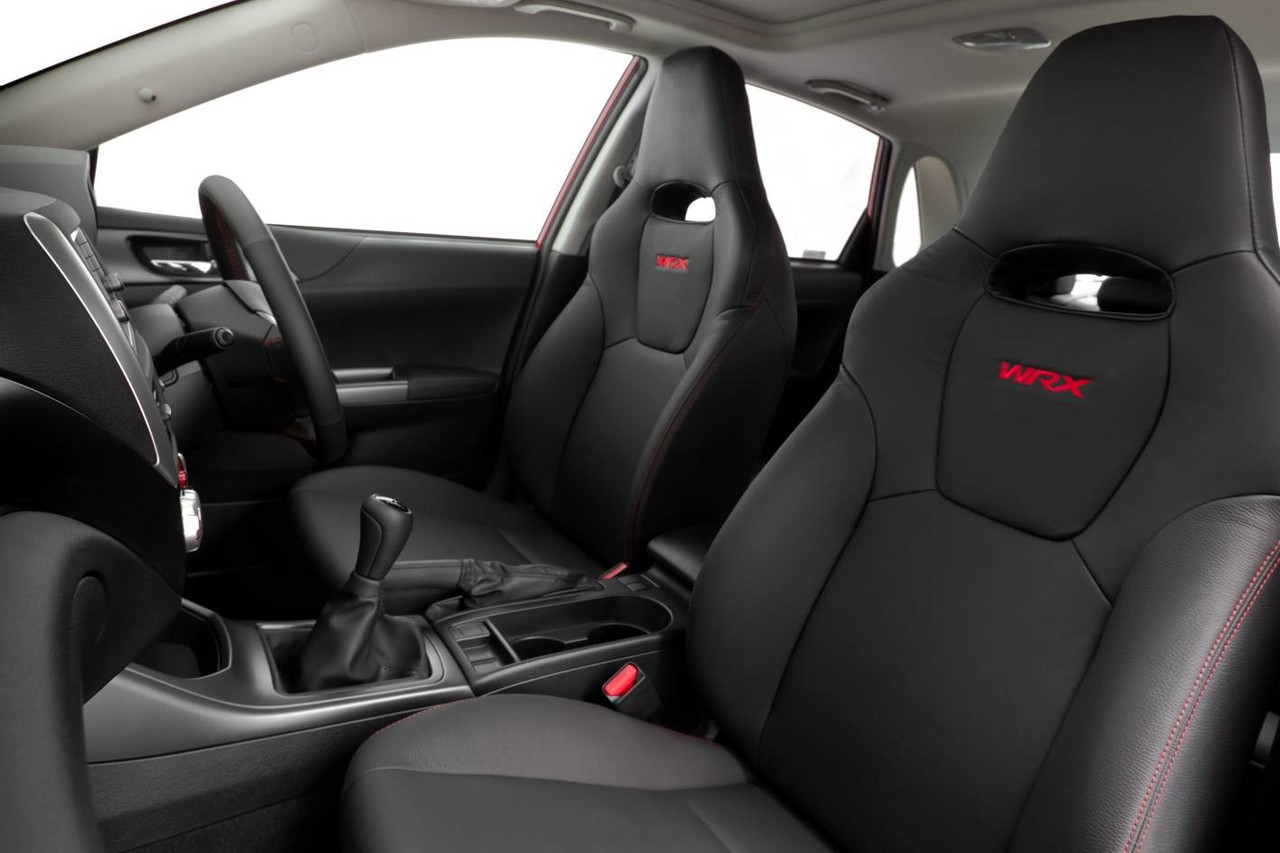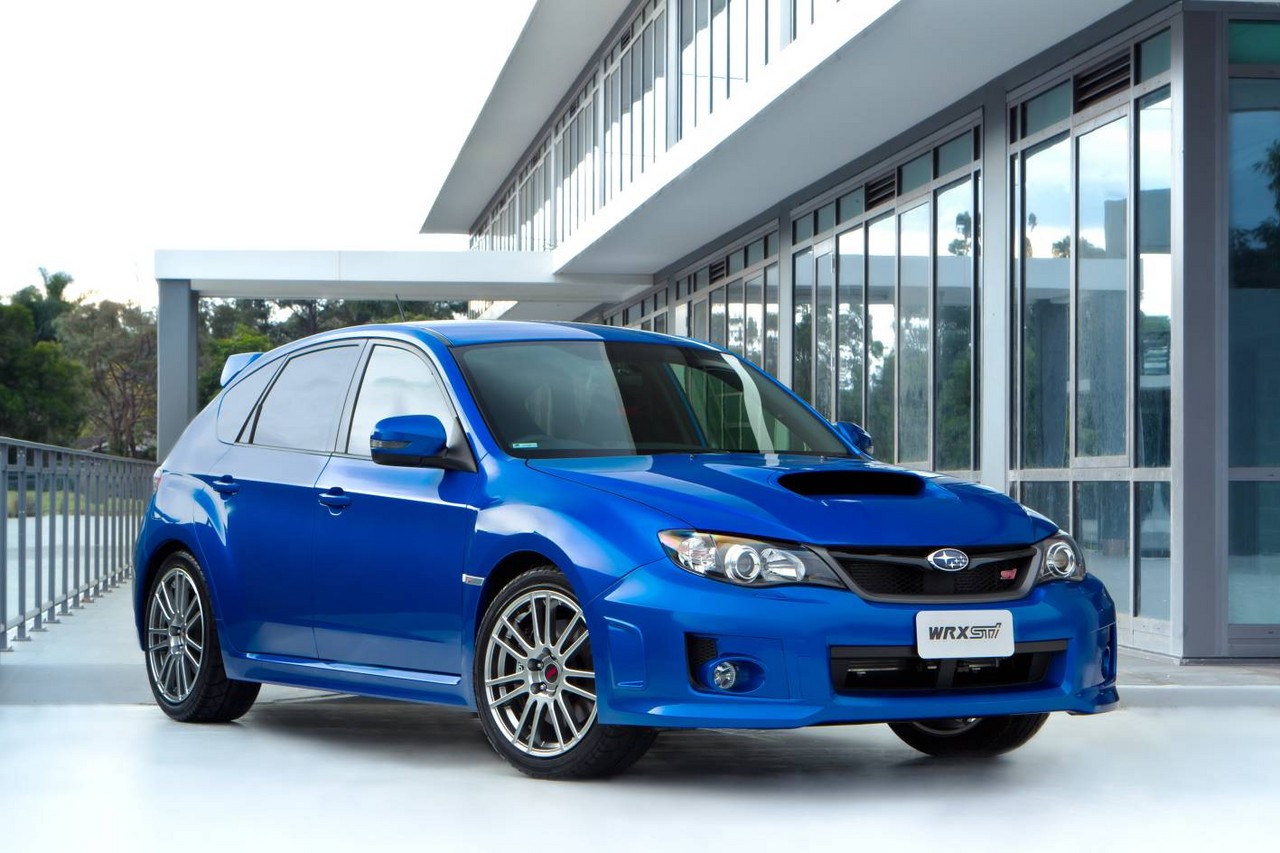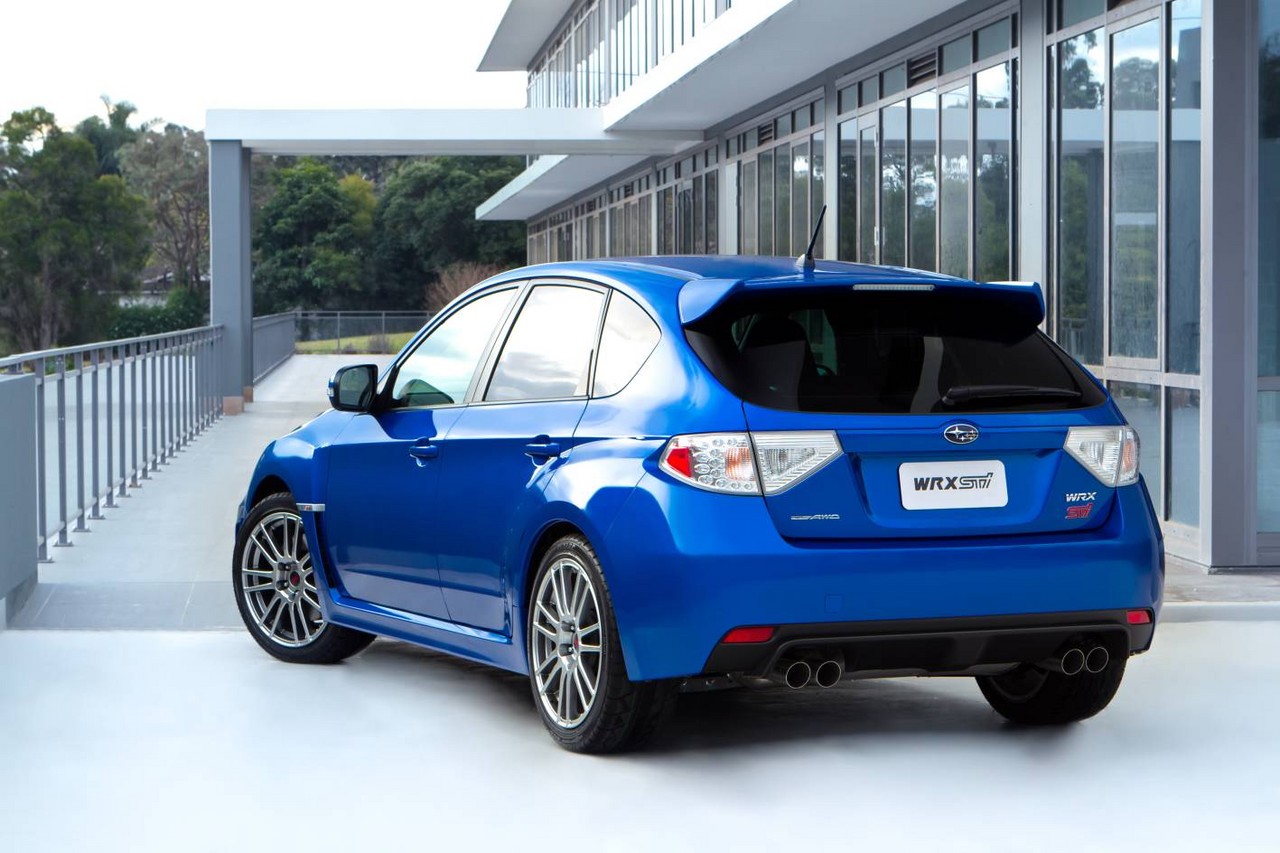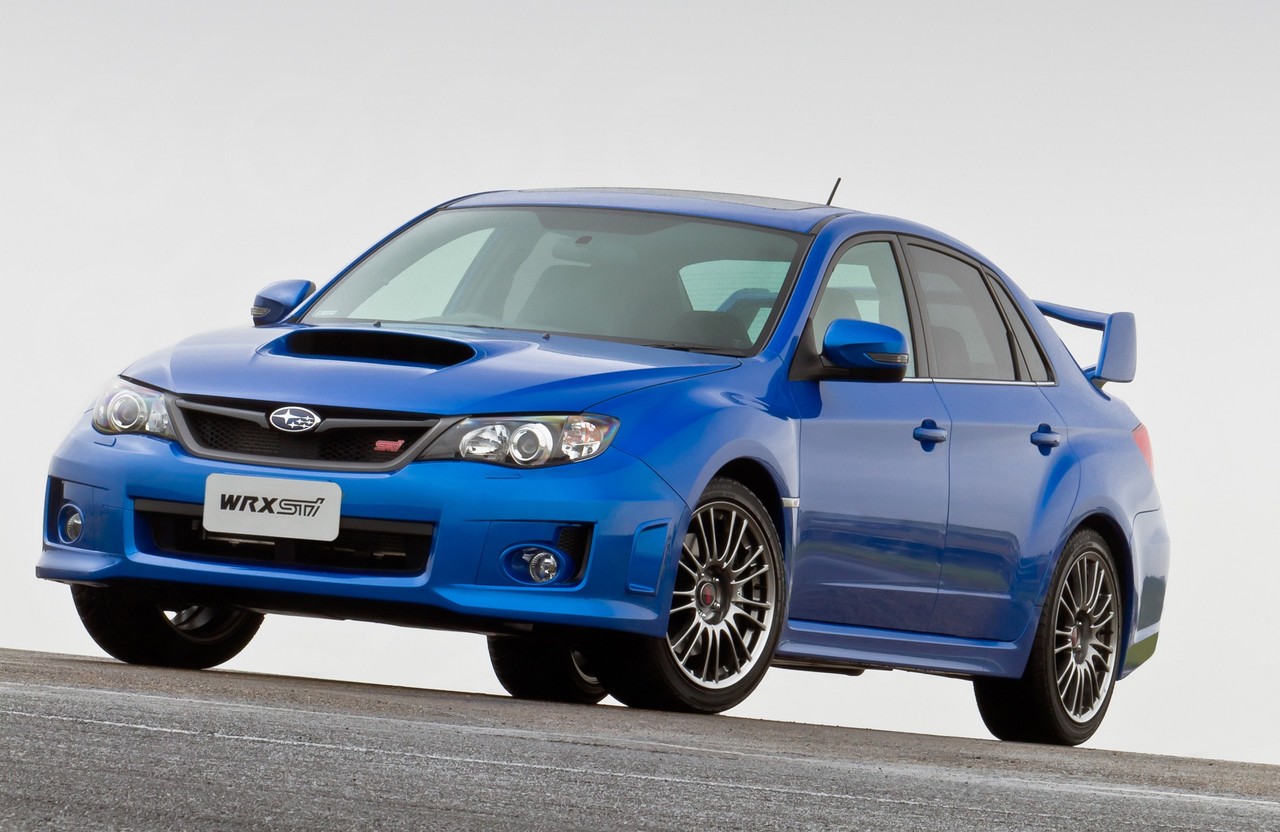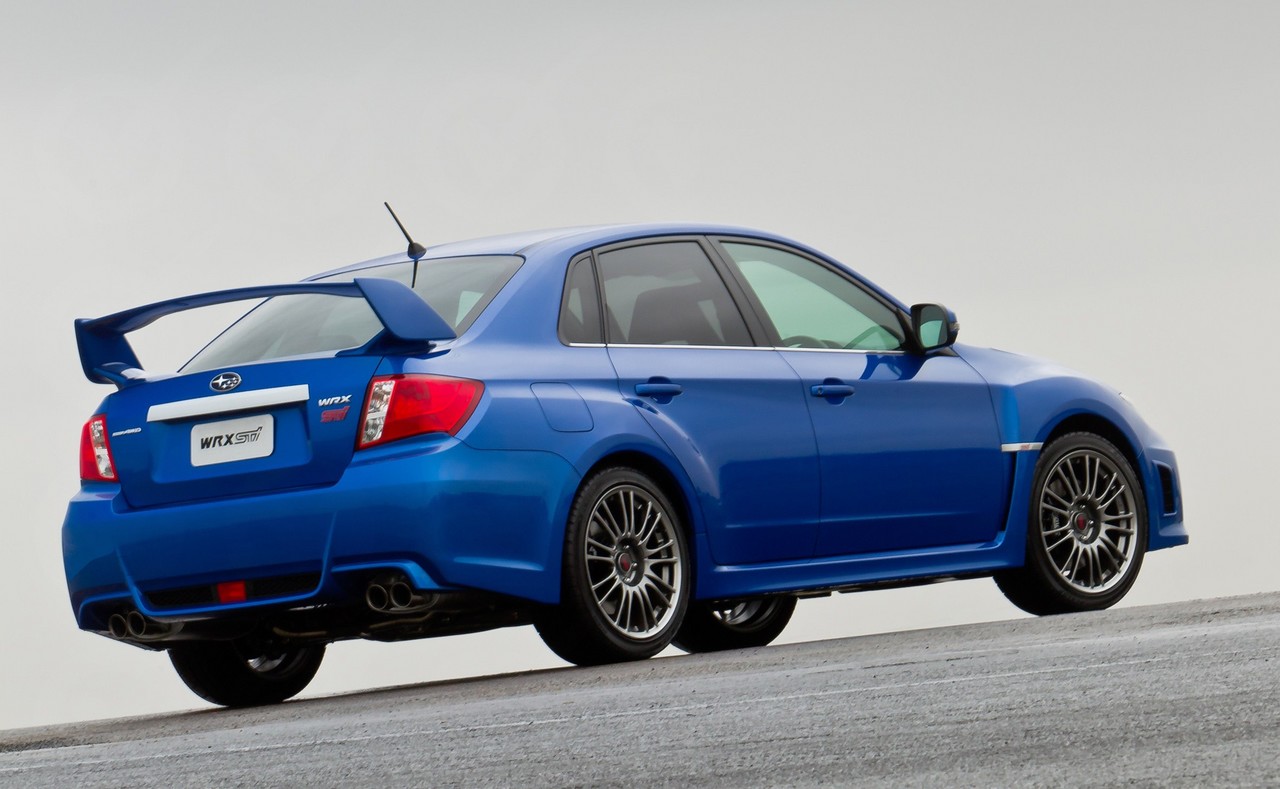
- Piston ringland failure
- Original, 169 kW Impreza WRX was underdone compared to its December 2008 replacement
- 50 Nm lower torque output for automatic Impreza WRX STi
- Overly light steering
- Front seats lack adjustment
- Plain interior
Review: Subaru GE.I/GH.I Impreza WRX (2007-10)
Overview
The Subaru GH Impreza WRX hatchback was released in September 2007, with the GH Impreza WRX STi hatchback following in February 2008 and the GE Impreza WRX sedan in December 2008. Manufactured in Ota, Japan, the all-wheel drive Impreza WRX and WRX STi were powered by Subaru’s 2.5-litre turbocharged EJ255 and EJ257 boxer (or horizontally opposed) four-cylinder engines, respectively.
Impreza WRX: EJ255 engine
For the Impreza WRX, the turbocharged 2.5-litre EJ255 engine had a semi-closed die-cast aluminium block with cast iron liners, an aluminium cylinder head with cross-flow cooling, double overhead camshafts per cylinder bank (belt-driven), four valves per cylinder, variable intake valve timing (Subaru’s ‘Active Valve Control System’ or AVCS), Tumble Generator Valves (TGVs) and a compression ratio of 8.4:1. For the GE/GH Impreza WRX, however, two different turbochargers were offered:
- Initially, the EJ255 engine had a TD04 turbocharger which provided peak boost pressure of 78 kPa (11.3 psi);
- From December 2008, however, the EJ255 engine was fitted with an IHI VF52 turbocharger which provided maximum boost pressure of 92 kPa (13.8 psi). Other changes introduced as this time included a larger intercooler and revised exhaust sytem.
Impreza WRX STi: EJ257 engine
For the Impreza WRX STi, the EJ257 engine had broadly similar properties to the EJ255. Compared to the EJ257 engine in the GD Impreza WRX STi , however, changes for the GE/GH Impreza WRX STi included:
- The introduction of Dual AVCS;
- Lower peak boost pressure (from 14.93 psi to 14.7 psi);
- A higher compression ratio of 8.2:1 (previously 8.0:1);
- Modified tumble generator valves;
- Modified spark plugs;
- Enhanced intercooler efficiency; and,
- Exhaust airflow resistance was reduced by 38 per cent.
Dimensions and body
Compared to the GD Impreza WRX , the GE Impreza WRX sedan was 115 mm longer (at 4580 mm), the same width (1740 mm), 35 mm taller (1475 mm) and had a 95 mm longer wheelbase (2620 mm). Relative to the GE sedan, the GH Impreza WRX hatchback was 165 mm shorter (at 4415 mm), though other dimensions were unchanged, while the STi models were also 55 mm wider (1795 mm).
From September 2010, however, the Impreza WRX had the same wider body as the WRX STi.
Suspension
The Subaru GE/GH Impreza WRX had MacPherson strut front suspension and double wishbone rear suspension.
| Engine | Years | Body | Trans. | Peak power | Peak torque | |
|---|---|---|---|---|---|---|
| WRX | 2.5-litre EJ255 turbo petrol F4 | 2007-08 | Hatch | 5sp man. | 169 kW at 5200 rpm | 320 Nm at 2800 rpm |
| 2008-10 | Hatch, sedan |
5sp man. | 195 kW at 6000 rpm | 343 Nm at 4000 rpm | ||
| WRX STi | 2.5-litre EJ257 turbo petrol F4 | 2007-10 | Hatch | 6sp man. | 221 kW at 6000 rpm | 407 Nm at 4000 rpm |
AWD systems
The Impreza WRX was fitted with a full-time all-wheel drive system which utilised a viscous coupling locking differential. In normal conditions, the system provided a 50:50 front:rear torque split. In the event that traction was lost, however, up to 80 per cent of the engine’s torque could be directed to either the front or rear axles.
The WRX STi had a front helical limited slip differential (LSD), a Torsen rear LSD and a multi-mode ‘Driver Controlled Centre Differential – Subaru’s ‘DCCD’, a mechanical centre differential paired to an electronic LSD – which enabled the driver to select from four settings:
- ‘Auto’, altered the torque distribution for optimum traction;
- ‘Auto +’, which locked the centre differential for a fixed 50:50 front:rear distribution;
- ‘Auto –’, which loosened the centre differential to increase the rear wheel bias when accelerating out of corners; and,
- ‘Manu’, which provided a 41:59 front/rear torque split.
Automatic WRX STi models omitted the DCCD, but had a 45:55 front:rear torque split and were fitted with an open front differential and a viscous rear limited slip differential.
Safety equipment
Standard safety equipment for the Subaru GE and GH Impreza WRX included dual front airbags, front side airbags, full-length curtain airbags (i.e. for front and rear occupants), ABS, electronic brake force distribution, brake assist, electronic stability control, traction control and front seatbelts with pretensioners and load limiters. Manual versions were also fitted with hill start assist to prevent the car from rolling backwards on take-off.
Brakes
The Impreza WRX had 294 mm by 24 mm ventilated front disc brakes with dual-piston calipers and 286 mm by 10 mm solid rear discs with single piston calipers. The Impreza WRX STi, however, had a Brembo braking package which consisted of 326 mm by 30 mm ventilated front disc brakes with four-piston calipers and 316 mm by 20 mm ventilated rear discs with dual-piston calipers.
ANCAP and Euro NCAP testing
In ANCAP crash testing , a standard 2007 GH Impreza (i.e. non-WRX model) hatchback achieved a five star adult occupant protection rating occupant protection rating with a score of 34.66 out of 37. In the frontal offset impact test, there was a slight risk of serious lower leg injury for the front occupants. Furthermore, there was a slight risk of serious chest injury for the driver in the side impact test.
In Euro NCAP testing , a 2009 GH Impreza hatch received a four star safety rating which included an 84 per cent adult occupant protection rating, a 73 per cent child occupant protection rating and a 57 per cent safety assist rating; the low safety assist rating reflected the fact that electronic stability control was not fitted as standard in European markets. In the pole test, high rib deflections indicated poor chest protection. Furthermore, protection against whiplash injury was rated as marginal.
Features: Impreza WRX
Standard features for the Impreza WRX included 17-inch ten-spoke alloy wheels with 205/50 R17 89V Yokohama tyres, a ten speaker 100 watt sound system with a six-disc in-dash CD player, auxiliary input and MP3/WMA compatibility, climate control air conditioning, sports bucket seats, cruise control, multi-function steering wheel, xenon headlights with washers, front fog lights, a leather-wrapped steering wheel, ambient lighting, a 60/40 split and flat-folding rear seat, remote central locking, power mirrors and windows, height and reach adjustable steering wheel, a height adjustable driver’s seat, 12 volt power outlets, privacy glass, an alarm and immobiliser.
Coinciding with the introduction of the more powerful, 195 kW EJ255 engine in December 2008, the Impreza WRX was upgraded with:
- Wider 17 x 7.0J alloy wheels with 225/45 R17 Dunlop SP Sport 01 tyres;
- Stiffer coil springs, stabiliser bars and top mounts for greater roll rigidity;
- Retuned dampers for linear response with minimal delay when steering;
- For the manual transmission, a ball type key was introduced for the first and second gear synchro hubs and change was made to the key groove on the third and fourth synchro sleeve for improved shift feel. Furthermore, hardened materials were used for the main shaft and first driven gear, while operation of the clutch slave cylinder incorporated an orifice valve to protect the drivetrain during rapid clutch engagement; and,
- A damper valve was added to the steering gearbox to reduce kickback.
Visually, the post-December 2008 Impreza WRX could be identified by its mesh grille, red brake calipers and, inside, ‘WRX’ logos on the front seats.
Features: Impreza WRX STi and Spec R
Compared to the Impreza WRX, the Impreza WRX STi was further equipped with 18-inch five-spoke alloy wheels with 245/40 R18 Dunlop SP 600 tyres, partial leather seats with Alcantara inserts, a leather-wrapped hand brake, power folding mirrors and front footwell lights; automatic models were also fitted with steering wheel gearshift paddles. The WRX STi was also fitted with SI-Drive (‘Subaru Intelligent Drive’) which provided ‘Intelligent’, ‘Sport’ and ‘Sport #’ settings for economy or performance driving settings. From September 2010, the WRX STi was fitted with Bluetooth connectivity and a USB input.
From February 2008, the WRX STi Spec R edition was offered; it was distinguished by its lightweight BBS alloy wheels and combination leather/Alcantara Recaro bucket seats.
2010 Impreza WRX Club Spec Evo 10
In May 2010, a limited-run Impreza WRX Club Spec 10 was released. Compared to the standard Impreza WRX, the Club Spec 10 was differentiated by its 17-inch Enkei alloy wheels (half an inch wider than the standard Impreza WRX), leather seats, satellite navigation, a power sunroof, STI front lip spoiler, a flexible strut tower bar and front support kit.
Related links
Review: Subaru GE.II/GH.II Impreza WRX (2010-13)
Overview
Released in September 2010, the Subaru GE.II and GH.II Impreza WRXs were fitted with the wider body of the WRX STi. As such, the updated Impreza WRX could be identified by its STi bodykit, four tailpipe exhaust and wider wheel tracks (35 mm wider at the front and 40 mm wider at the rear).
As part of the update, the GH.II WRX STi range was expanded with the introduction of sedan bodies and a five-speed automatic transmission. Furthermore, the WRX STi’s suspension was lowered by 5mm and featured new aluminium lower arms for the front suspension, a revised rear subframe, revised spring and damper rates and thicker front and rear stabiliser bars; the WRX STi was also fitted with a larger rear spoiler.
| Engine | Body | Trans. | Peak power | Peak torque | |
|---|---|---|---|---|---|
| WRX | 2.5-litre EJ255 turbo petrol F4 | Hatch, sedan |
5sp man. | 195 kW at 6000 rpm | 343 Nm at 4000 rpm |
| WRX STi | 2.5-litre EJ257 turbo petrol F4 | Hatch, sedan |
6sp man. | 221 kW at 6000 rpm | 407 Nm at 4000 rpm |
| 5sp auto | 221 kW at 6000 rpm | 350 Nm at 3000-6000 rpm |
Features
Standard features for the Impreza WRX were largely unchanged. For STi variants, however, 18-inch Enkei alloy wheels were fitted as standard; for the Spec R, the satellite navigation system and power sunroof were made standard, though the Recaro front seats became an extra-cost option.
2012 Impreza WRX Club Spec
In July 2012, three hundred limited-run WRX Club Spec editions were released. Solely available as sedans with manual transmissions, the Club Spec was available in tangerine or black paint finishes and could be identified by its black-finished alloy wheels, black front guard, black STi rear wing and ‘Club Spec’ badges. Inside, the Club Spec featured leather trim, while black models had red contrast stitching on the seats and steering wheel.
2013 Impreza WRX S-Edition
In early 2013, two hundred and fifty (250) limited-run WRX S-Edition sedans were released. Available in Crystal Black, Satin White and WR Blue paint finishes, the S-Editions could be identified by their 17-inch black alloy wheels, colour coated door mirrors, black STi rear spoiler and STi front lip spoiler; the S-Editions were also fitted with a flexible STi tower bar. Inside, the S-Edition models had leather seats and an STi short-shift gear lever assembly.
2013 Impreza WRX RS40
In August 2013, three hundred (300) limited-run WRX RS40 editions were released. Compared to the standard WRX, the RS40 was distinguished by its gold-coloured 17-inch alloy wheels, Recaro front seats with blue Alcantara inserts, STI short shift gear assembly, STI flexible tower strut brace, STI front and rear spoilers, WR blue mica paint finish, ‘RS40’ decals and ‘RS40’ internal badge.
Brochures
- Brochure: Subaru GE.II/GH.II Impreza WRX STi (October 2010)
- Brochure: Subaru GE Impreza WRX RS40 (July 2013)
- Brochure: Subaru GE.II/GH.II Impreza WRX STi (December 2013)
Related links
